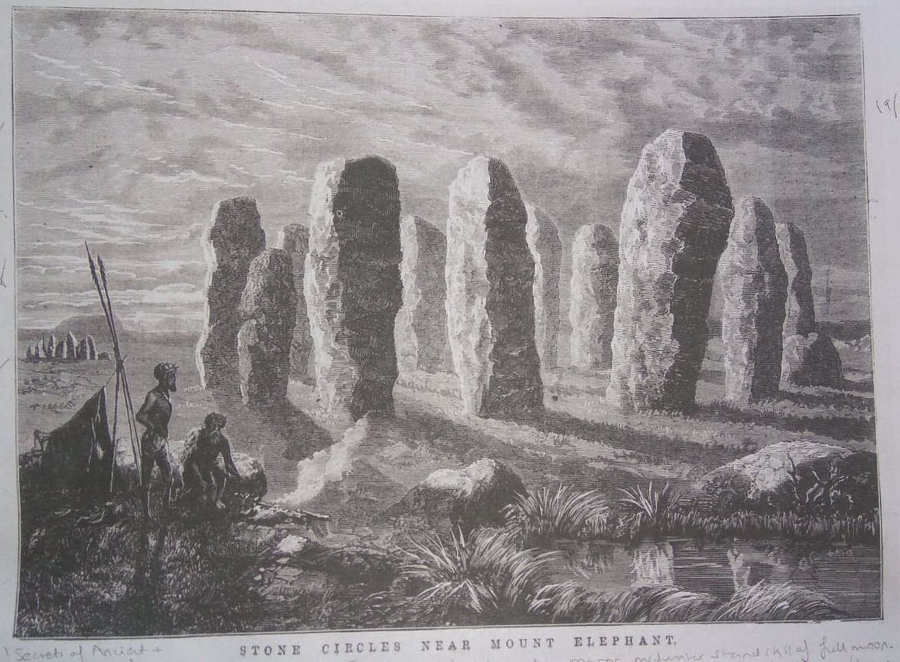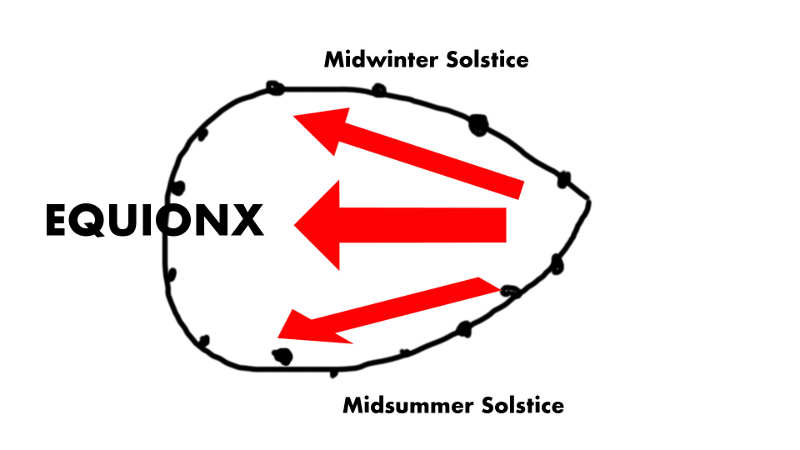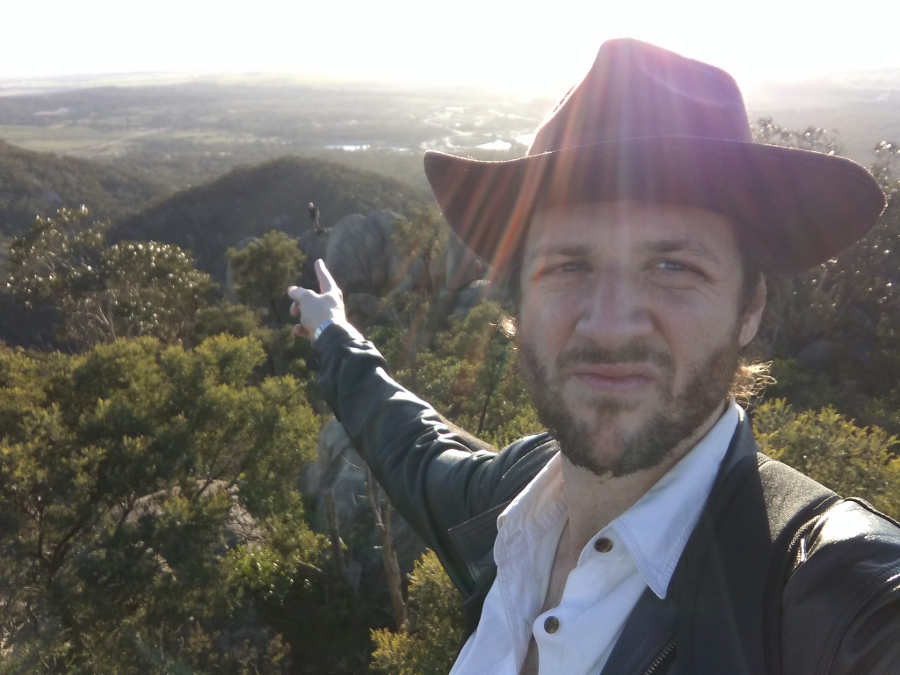The Land between the Two Volcanoes
An ancient odyssey
I believe that there was a vanished civilisation in Western Victoria in ancient times. I will be making a PDF of a magazine article I got published, freely available, which describes this lost civilization, and some attempts, past and present, to uncover its existence.
Lost Stone Circles!?
It would seem that in the 19th century, there were six stone circles located between two former volcanic peaks, Leura at Camperdown in the South, and the Majestic Mount Elephant, further north. All have been obliterated and are even incorporated into the stone houses of the 19th century settlers, which survive.

The lost Stone Circle.
William Buckley
Here is some information about William Buckley in our Bunyip video.
Remnants of this civilization in western Victoria would have been the reason William Buckley, an escaped convict, was able to survive for almost 30 years. It spawned the Victorianism: 'you got Buckley's chance mate'.
William Buckley was a convict at the settlement (more like a camp site), of Sullivan Bay, Victoria. This was a beach location, just inside Port Phillip Bay. I had the good fortune to explore the area one day, intensely curious about the first colony in Victoria, and desirous to find out any information I could, in particular whether or not there were any remnants of any structures, or even bits of metal lying around (all taken away!).
Using a map I saw where the barrels of water used to be, and the 'governor's house' on a cliff, where now an expensive mansion is being built. Behind the beach is a flat area which is where I suppose the tents and barracks as well as convict areas were. It must have been a miserable existence in this comparatively tropical location.
Upon hearing that Sullivan Bay had 'failed' and that they were going to be relocated, Buckley and two others hop-skotched away into the bush. Two of his friends appear to have met grisly ends and he continued on alone.
One indication that the civilization he encountered is in fact similar in terms of burial practices to central Asia, was that he found burial mounts with weapons sticking out of the top. These have been compared to the 'sword in the stone'. He pulled a spear out of one and walked around with it.
When he was encountered by Aboriginals, they thought he must be the spirit of their departed friend owing to his skin colour, and the fact he carried his weapon! He was treated like family. Eventually he was forced to join other tribes after his was conquered. He learned the aboriginal languages and lived as an aboriginal, sometimes for years at a time, eating eels and other fruits which seem to have been cultivated, including a 'native watermelon', on the shores of lakes in Western Victoria! My eyes popped out of my head when I read information like that. Eeels were cultivated as well as fruits. It was a real civilization, a real existence, or at least the vestiges of one.
There was even some kind of 'centralised' taxation system at work. For instance, Buckley writes there was a call throughout the land that stone axes were being sought and must be delivered to a central location. Buckley said 'I never did find out who this joker was'. This would indicate that his tribe did not take the call to arms seriously... the civilization had broken down. He does not mention stone circles but he is the first to mention the Bunyip, an obscure cryptid.
Buckley got tired of the endless slaughter, writing in his biography later on that scarce a month went by without some murder. Tribes would attack each other over women. It would seem that Buckley lived in the final days, well after the hay-day, of the civilisation of Western Victoria. I cannot help but feel that aborigines escaping from Europeans around Botany Bay and Sydney were also shifting into the area, creating migratory invasive movements.
When he saw ships from Launceston (establishing Melbourne) in 1835, he strolled into camp and pretended to be a shipwrecked sailor. A pardon was organised when his identity was revealed. He worked with the early settlers . His biography was written as part of an attempt to secure a pension for services rendered to the foundation of the Port Phillip District of New South Wales, which in Queen Victoria's time would become the Colony of Victoria. He thence shifted to Tasmania, to the disappointment of his aboriginal friends who had grown accustomed to him. I believe that his legacy is his record of the days after the end of the LAND BETWEEN THE TWO VOLCANOES.
Who were they?
This is really hard to say. I believe they were similar to the Gimpie people. That is, they were similar people to those who built the Atlantic pyramids in the Azores and elsewhere. This is because of the similarity with the photograph of the Gimpie pyramid and its resemblance to pyramids of the Atlantic. This would make the people synonymous with the 'long ears.' These were peoples of Easter Island (we also see representations of Buddha exhibiting a long ear in Asia). Easter Island had Long Ears, the ruling class, as well as Short Ears. The Long Ears came from the East (fleeing Peru for some reason) and the Short Ears were Polynesians from the West.
It is apparent that the Inca Royal Dynasties of the time of the conquest were in fact also Long Ears.
Upon sailing across the Pacific some reached Gympie. Some sailed further south, reaching the Melbourne area and western Victoria, establishing a civilisation here. This is the only place you will read it, and in no textbook. When asked, in the 19th century, the aborigines, although they were descendants of the lost civilisation, had no idea what the Stone Circles were for, or who built them.
The Gympie people give us a clue, also to the identity of the people behind the civilization in Victoria... they may have been a branch of the Gympie people.
Conspiracy of Silence?
I have only been studying this for about two years, but in this time I was able to easily put two and two together and see what is going on. The question is, why have others not been able to do the same? It is pretty clear there were no protection mechanisms at all in Western Victoria in the 19th century and farmers were able to destroy what they wanted. I believe they may have feared the return of the aboriginees and wished to obliterate all remaining traces. The current remaining stonehenges are located in semi-secret locations, one protected by Park Rangers, thank goodness. As late as the 1940s, a remarkable Avebury-like stone serpent was in fact obliterated in New South Wales.
I feel this is very similar to the pre-Maori civilization of New Zealand, which people have described as 'Celtic'. I would in fact describe it as partly 'Toltec' or even 'Terascan.' These people were a mixture of Atlantics and Native Americans, as certain of their artefacts appear 'Celtic.' in appearance. It all goes to show there were MANY world-explorers, long long long before Colombus!
Update: 2017, Southern Boundary of the Kingdom?
This lost empire in Victoria may have been located between, or centered in the area of these two very large volcanoes.
I had already visited Mount Elephant. We decided to visit this southern volcano in Victoria and I noticed something quite bizarre. There is an almost-straight wall inside the volcano. I have never seen such a thing inside a crater before, (but then again I havn't been to that many.)
The pumice was obviously piled up into a wall! Someone had tried to construct a habitation here, inside the crater. But this would surely draw attention to themselves, as everyone around obviously wants to check out the crater... so "what's going on?"(TM!)
For this reason, I feel the area may have been a palace of sorts. It would have been guarded. People could see who was coming for a huge distance, particuarly if the Viracocha had taken a telescope with them from South America, or made one. I find this simply incredible! The walls of the volcano are very steep. It is a natural ampitheater and would have possessed excellent defensive qualities. The area should be treated as an arcaheological zone. I feel the pumice wall was simply not useful enough for the town of Camperdown next door to have quarried!
Why call this a palace wall? Quite simply I am struck by similarities between what is found here and with Eurasia and the Americas! This civilization had ring barrows (Sunbury), as well as barrows (now levelled), near six stonehenges on the plain (now all gone). It's quite remarkable!
Update: 2018, a trip to Wurdi Youang
I've noticed that Wurdi Youang, our own 11,000 year-old stone-circle, is on a similar latitude to Derrinalum, which had its own much larger stone circle, which was destroyed by farmers for its rock, over a hundred years ago. I suppose back then it was all a matter of survival for those early colonists! they were too busy trying to live to worry about ancient history. A friend I was travelling with, on this trip of 22 June suggested to me that this circle could have been the precursor to the larger one at Derrinalum!

The astronomical alignments at Wurdi Youang
We didn't actually get to the circle, on this winter solstice trip, just climbed the mountain instead!
